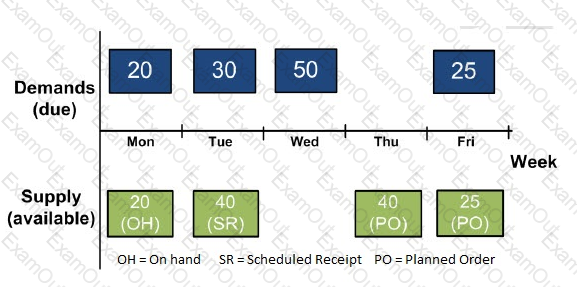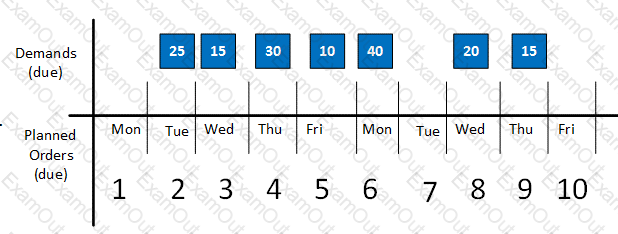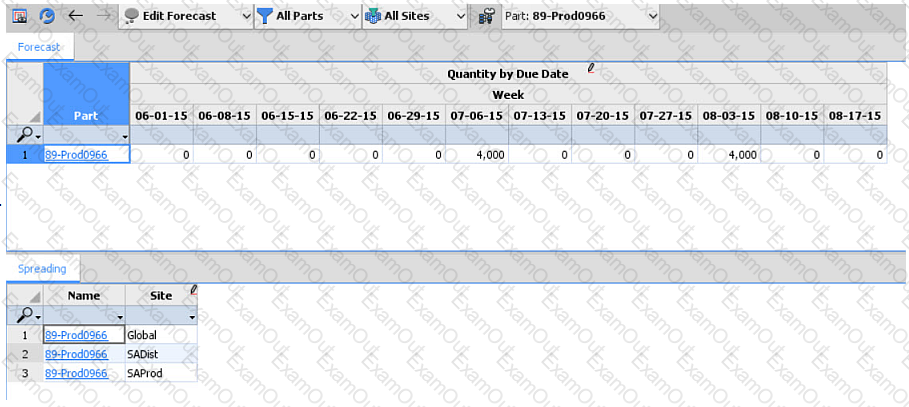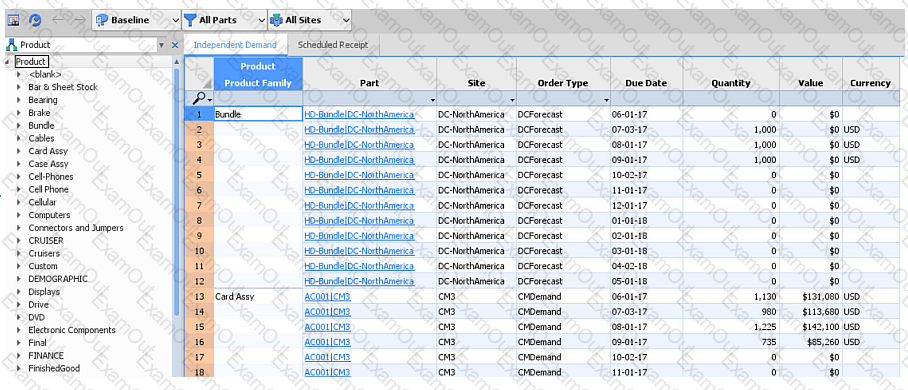
The graphic shows a path to generate a list of customer prices with record counts for each table in the path. Given the following filter expression:
Part.ProductNumber.ProductGroup.ProductFamily In ('bikes','trikes')
AND Customer.Country IN ("US", "CA")
In this situation, what is the chosen line of descent from the query engine?

A part has several demands due in a particular week. All demands are the same priority. Available supplies are shown in the graphic. The control table settings for the OrderPriority.AllocationRule is FairShare and PlanningCalendars.AllocationCalendar is Week.
How much of the supply quantity on Thursday will be allocated to the Wednesday demand?
You have a worksheet based on the Part table. You want to know the total number of unique customers that have orders for each part.
Which expression accomplishes this task?
You have a report based on an InventoryTransfer table. Due to currency fluctuation, you are asked to report the difference between the future EffectiveUnitTransferCost and the cost to transfer it today.
Which expression will accomplish this task?
You want to create a workbook command that deletes records in theHistoricalDemandActual table that are more than a year old. You want to perform this action automatically once a week, without having to manually run the command.
In this situation, which two statements are true? (Choose two.)
You are creating a metric worksheet to calculate the number of late orders for a specified time period. The metric worksheet will be based on the IndependentDemand table and it has two columns: DueDate and Count. The expression for Count is 1. The worksheet's filter expression is: DaysLate > 0 and Order.Type = 'Actual'.
In this situation, what is the column sequence and grouping properties for the metric worksheet?

Given this information and referring to the graphic:
Number of Days of Supply: 2
DaysSupplyRule: ByPeriod
PeriodSupplyInterval: Week
PeriodSupplyDueCalendar: Week
Which statement about the planned order(s) that are created is true?

You want to enter a forecast for 6000 units of part 89-Prod0966 in the June 8 bucket. You expect that three records will be inserted into the IndependentDemand table (equal quantities of 2000 at each of the three sites); however, you get an error.
Which action would solve the error?
A client wants to provide their sales staff the ability to add forecasts for the global total of demand across all SKUs by each customer by month. The client wants to use their historical demand to allocate from a monthly forecast to a weekly forecast.
Which three actions would accomplish this task? (Choose three.)
Choose 3 answers

You want to enable data caching on the worksheet shown in the graphic.
Which two actions will accomplish this task? (Choose two.)
Choose 2 answers

